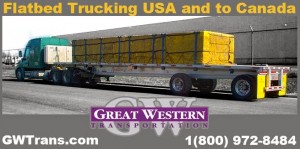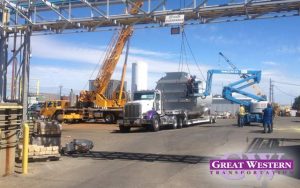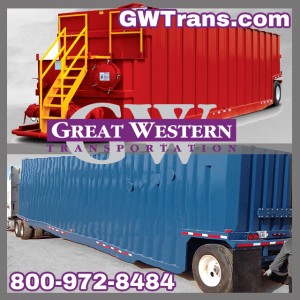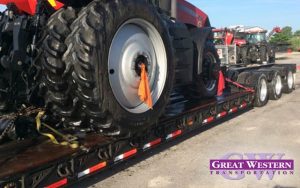Auctions are a great place to find deals on all kinds of heavy equipment and machinery at a fraction of retail. It’s a perfect fit for small, independently owned, cash-strapped construction businesses that need additional, or updated equipment. Transporting equipment bought at an auction requires a great deal of planning and preparation. In particular, there are three important things that must be addressed; truck and trailer specs, permit requirements and route planning.
Truck and Trailer Specs
The size and type of trailer depend solely upon the type of equipment you’re moving, however, flatbed trailers are generally used for this purpose. Very large, heavy loads require reinforced trailers, specially designed for heavy-haul transportation. Another important aspect, however, is the horsepower of the truck’s engine, which powers the load down the road. It’s got to be powerful enough to move the weight of the tractor, trailer, and load with ease. Therefore, it’s vital that you know the exact dimensions (length, width, height) of your equipment, as well as the weight so it can be matched with the appropriate truck and trailer.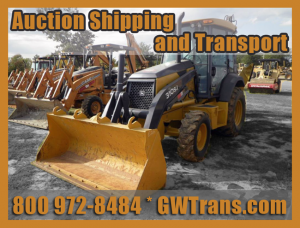
Permit Requirements
Depending upon how big the equipment is, you may be required to get special permits before you can transport it. Over-weight loads cause damage to bridges and roads, while long loads are difficult to maneuver in tight areas. Height can be an issue in areas where power lines hang low, or other obstructions are present. Therefore, it is important to get official permission before moving day. Most logistics companies will secure the proper permits, but it’s a good idea that you double-check to make sure everything is in order.
Route Planning
The objective is to move your auction find from the auction house to your warehouse, facility, or job site in the most efficient manner possible. In order for that to happen, you need a clearly defined route that minimizes disruptions for other motorists and takes the most direct path. Again, permission may need to be obtained from a city, county or other local government office in order to use certain roadways. An experienced logistics provider will have the technology and staff to create the perfect route, no matter how large the load, or difficult the circumstances are.
If you’re one of the savvy business owners who are taking advantage of those phenomenal deals found at auction houses across the country, keep in mind you’ve got to move whatever you buy. You’ll need a good, heavy-duty trailer, good-running, powerful truck and a driver. Don’t forget permits and a well-planned route. Or, you can simply outsource this task to a reputable heavy-haul trucking firm and rest assured that they will safely, efficiently, and quickly get your cargo delivered.





